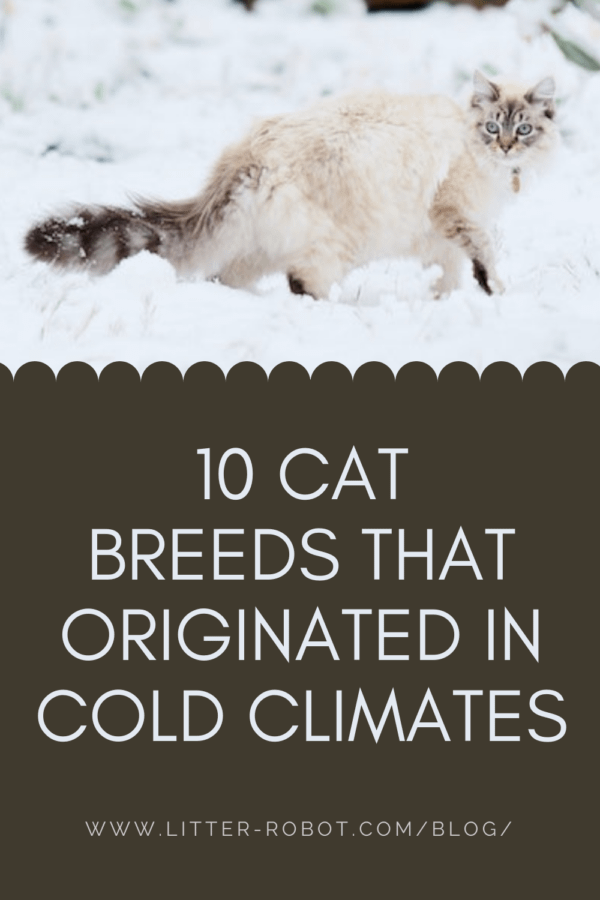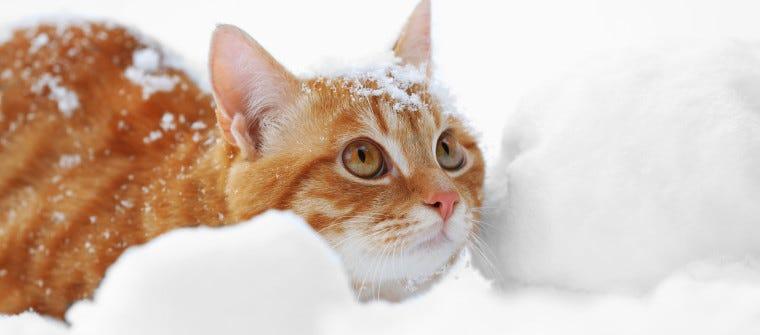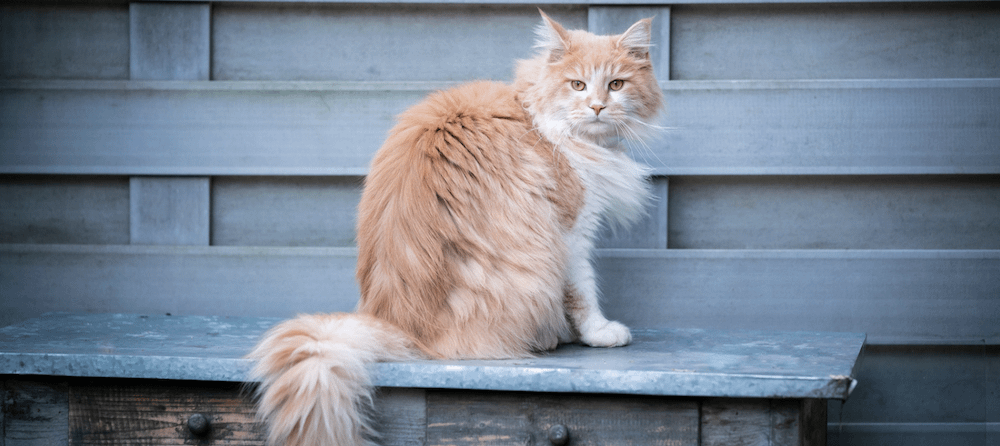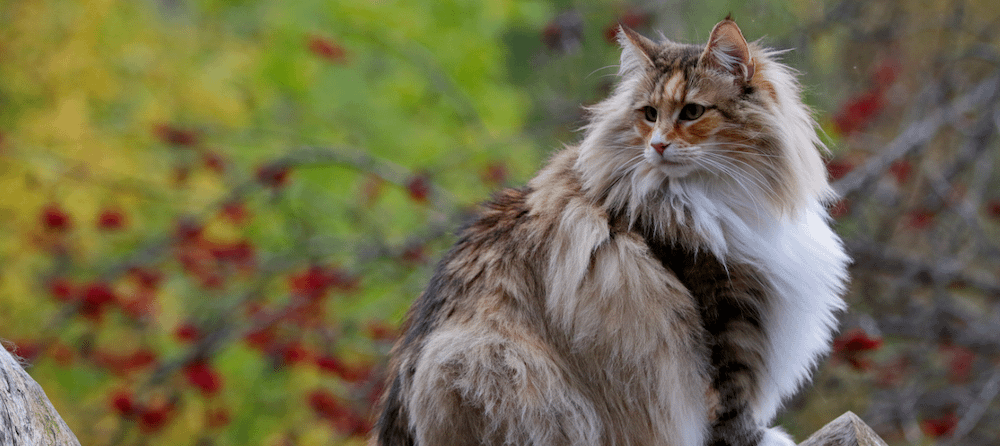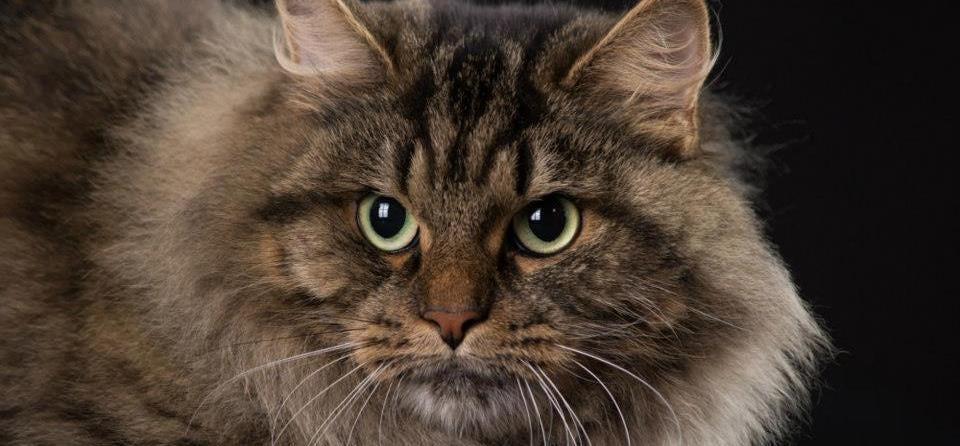Updated April 9, 2024
Before there were indoor cats kept as snug pets, the majority of them had to brave the chill winds and harsh realities of winter. (Sadly, many strays and ferals still do—learn how to care for outdoor cats in the winter.) Today we’re looking at 10 natural cat breeds that originated in cold places, as well as the physical traits that they adapted to survive.
Do cats get winter coats?
Yes, cats can develop thicker coats in preparation for colder weather, similar to many other mammals. This phenomenon is often referred to as "winter coat" or "winter fur." This thicker fur helps them retain body heat and stay warm during colder months.
However, indoor cats may not experience the same level of seasonal coat changes as outdoor cats. In addition, some cat breeds are naturally adapted to colder climates and may have thicker coats year-round.
How cold can cats survive outside?
When the temperature drops below 45 degrees Fahrenheit, cats can feel the bite, despite their thick coats. This is especially true for kittens, senior cats, and those with health conditions, who may feel the chill at even milder temperatures. Whenever the mercury drops below freezing, many cats run the risk of hypothermia and frostbite.
Yet, there are some cat breeds—like the ones we’re about to explore—that have evolved to withstand colder climates, even earning themselves the name “winter cats.” Hailing from the iciest corners of the globe, these breeds boast physical traits that help them weather harsh winters.
Common traits of cold-weather cat breeds
Unsurprisingly, a dense fur coat is an essential shared trait among cat breeds that originated in cold places. That doesn’t necessarily mean a long fur coat, however. Although many cats on our list are long-haired breeds, several sport short-haired double coats or even curly-haired coats in order to keep warm.
You might be surprised to learn that several of these cat breeds have water-resistant fur, which allows them to withstand not just the cold, but also wet and snowy conditions. Whether in the form of snow or freezing rain, moisture can be a big problem in cold weather, as it can make the chill feel even more intense and lead to hypothermia.
Last but not least, these cats tend to be lithe and muscular, regardless of size. Some of these breeds grow quite large, while others are small and athletic. The muscular build aids in generating and retaining heat, making these cats all the more suited to cold climates.
The average domestic cat might grow a thicker coat for winter, but it doesn't quite match the density or cold-fighting abilities of our cold-weather breeds. This means that while your cuddly house cat can handle a chilly day, they might struggle in the icy conditions that these tough breeds can handle.
10 cat breeds that originated in cold places
Siberian
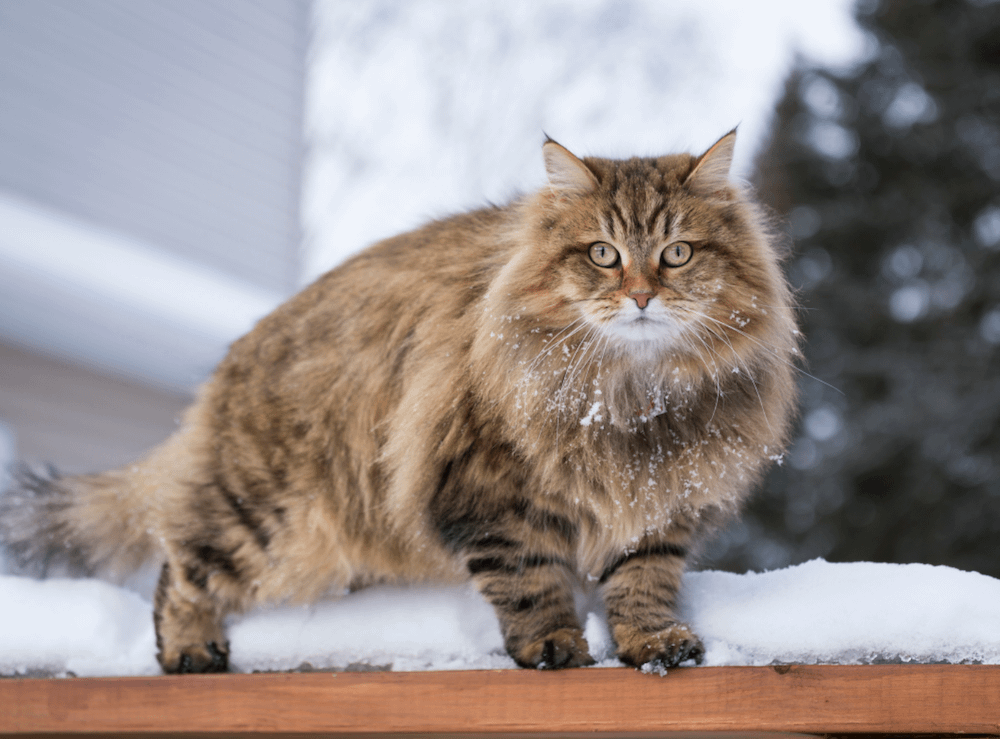
As their name suggests, the Siberian cat is made for handling the intense cold weather of Siberia. Their coat actually varies by season: In the winter, they will have a thick, rich, full, triple coat that would have protected them from their native Russia’s cold climate. In the summer, they shed the heavy winter coat for a shorter, less dense coat.
Siberians are one of the oldest cat breeds. They may even be the ancestors to other long-haired cat breeds, including the Norwegian Forest cat and Maine Coon. Despite their imposing ancestry, these winter cats are as friendly and affectionate as they come. They are intelligent as well as people-oriented, enjoying learning new tricks and showing a fascination with water.
To top it off, they’re one of only two cat breeds considered to be hypoallergenic, due to their lesser production of the allergen-causing protein Fel d 1.
Kurilian Bobtail
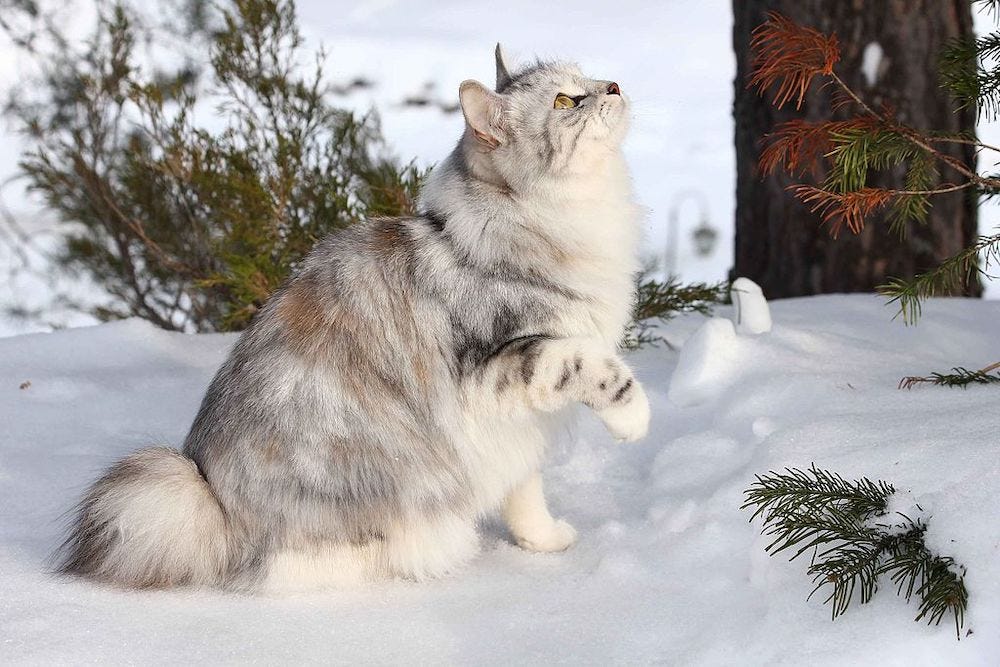
The Kurilian Bobtail is a natural breed that was found on Russia’s Sakhalin island and Kuril archipelago. They were brought to central Russia in the mid-20th century by members of the military or scientists. With a bobtail and long hind legs, this cat could be mistaken for a lynx thriving in a cold climate. They’re known for their hunting abilities, as well as their love of water.
Today Kurilian Bobtails are popular as domesticated felines in Russia for their mousing abilities. While not especially common in the U.S., this breed is surprisingly loving and gentle. They’re also as independent and intelligent as you’d expect. Their semi-long coat comes in a variety of patterns, usually displaying silver highlights. Our personal favorite feature? Their fun pom-pom tail!
Norwegian Forest cat
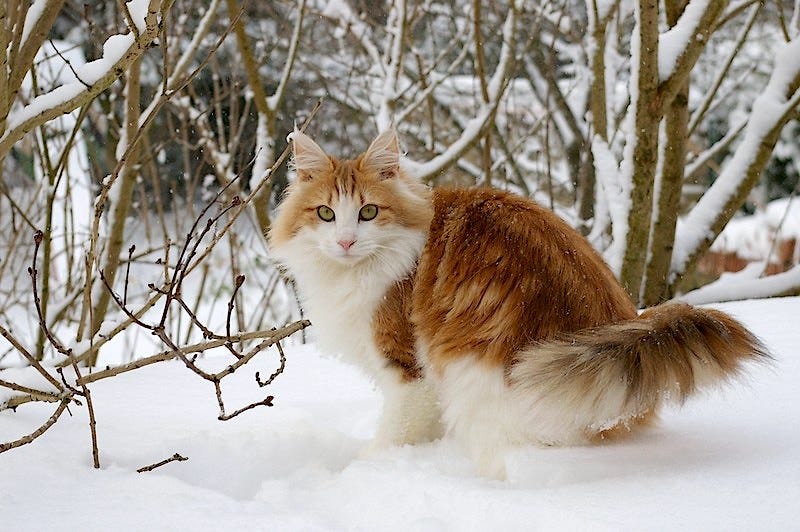
The Norwegian Forest cat has a water-resistant, semi-long coat with a dense undercoat developed to help the cat survive in the cold climates of Scandinavia. During winter, their ruff is full and the dense wooly undercoat thickens to protect them from the cold. This strong and sturdy cat breed takes around 5 years to fully mature, the end result being a kitty that weighs up to 20 pounds!
The Norwegian Forest cat has a storied past, having been included in Viking legend and mythology. (In case you forgot your Scandinavian lore, Norse goddess Freya’s chariot is pulled by two cats!) Their personality mirrors their history—they are adaptable, resilient cats that are capable of love and independence in equal measure.
Russian Blue
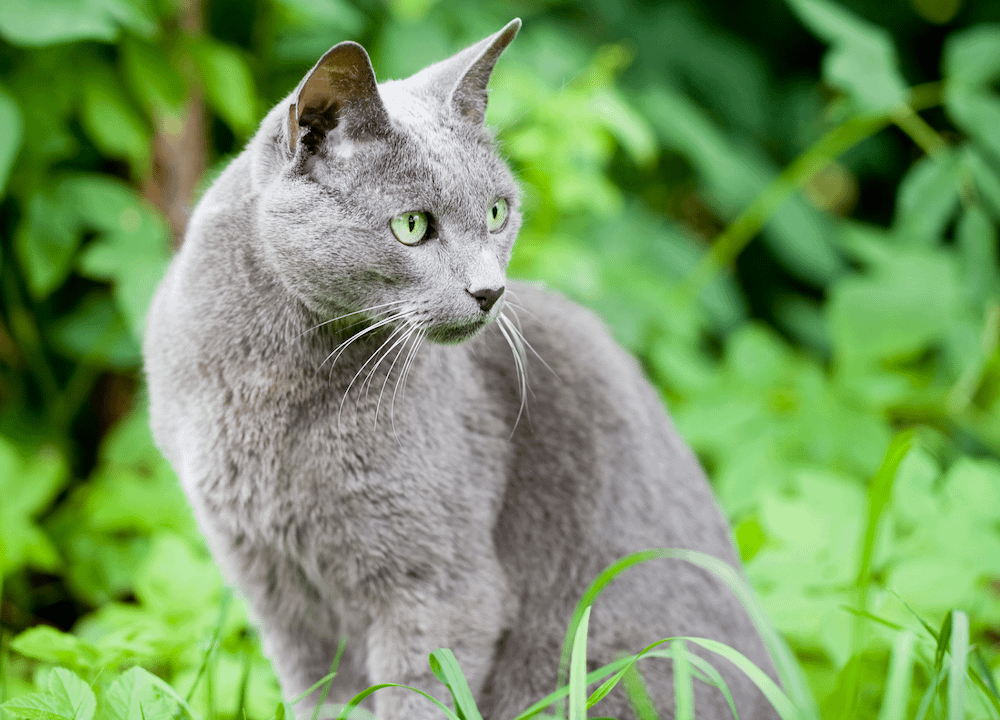
Russian Blue cats originated on the Russian port of Arkhangelsk on the White Sea, about 150 miles south of the Arctic Circle. This graceful cat breed keeps warm with their hallmark double coat, which is short, dense, and blue tipped with silver. According to some legends, the Russian Blue was at one time the target of hunters who “likened their luxuriant fur to the fur of seals.”
Luckily, this breed no longer has to worry about being hunted for their lovely, shimmery coat. The Russian Blue is a gentle and playful cat that doesn’t mind being cuddled but values their independence. They are loyal to their family and somewhat shy around strangers. They are typically low-maintenance and adapt easily to changing environments, making them great for families and first-timers alike!
Maine Coon
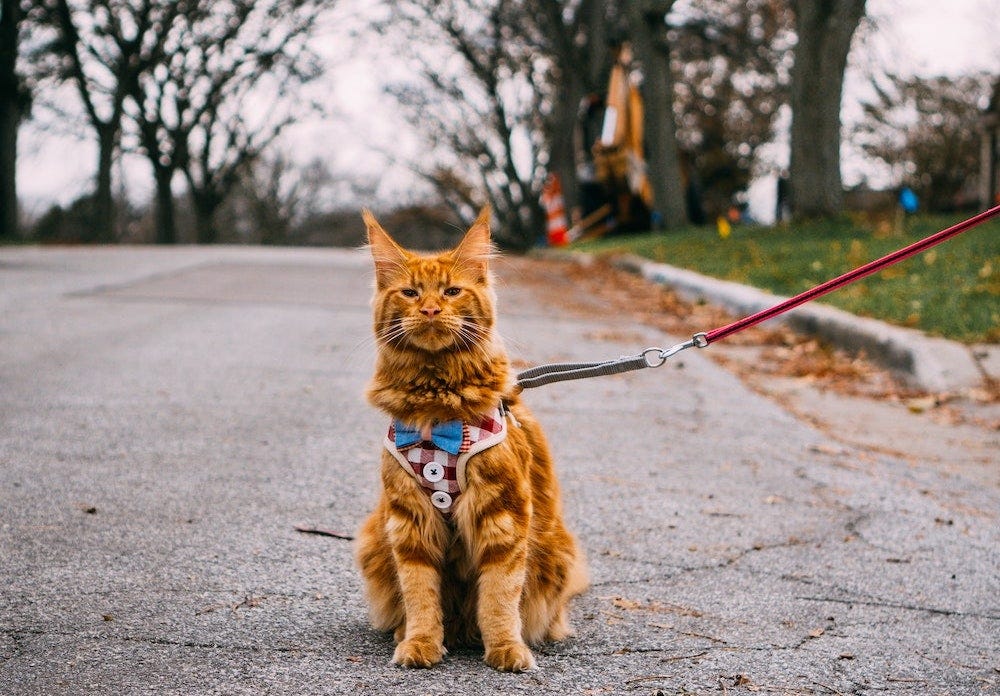
There is some debate as to where the popular Maine Coon cat originated. Most believe the breed is a result of matings between pre-existing short-haired domestic cats and overseas longhairs (perhaps introduced by New England seamen or even Vikings). Regardless, the heavy, water-resistant coat and large, muscular body makes the Maine Coon cat suited for harsh New England winters.
This mighty kitty sets world records for being the longest domestic cat, and can weigh up to 25 pounds! The Maine Coon is known as a gentle giant for good reason, as they are highly adaptable, easygoing, and attentive to their family members. And of course, these oft-polydactyl cats are excellent hunters—but the modern Maine Coon shouldn’t have to worry too much about that, snuggled safe and warm inside with their humans!
Turkish Angora & Turkish Van
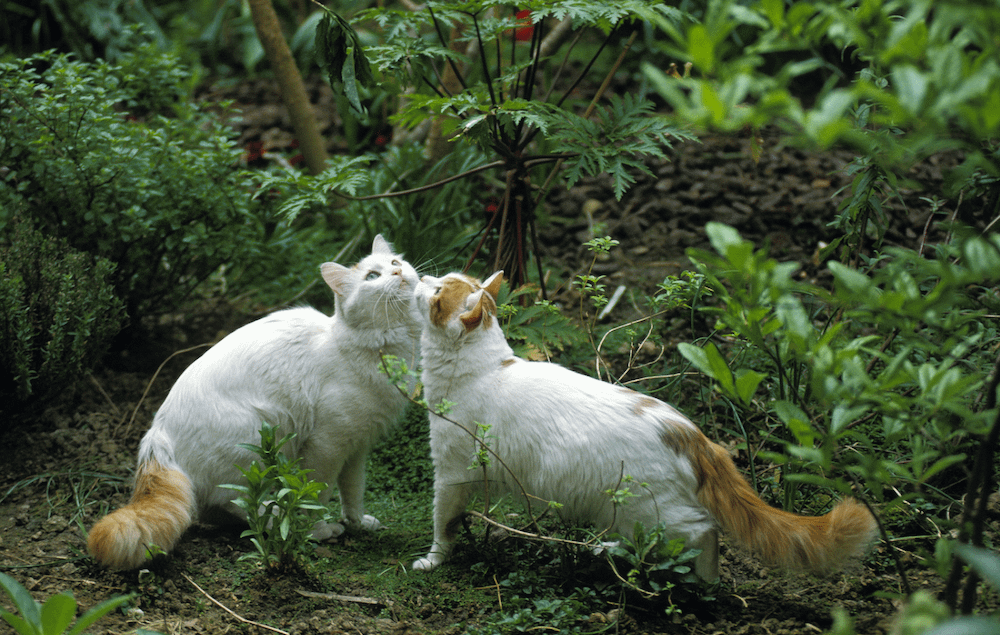
The Turkish Angora and Turkish Van cats originated in Turkey. Breeders believe that “the harsh landscape of the mountains and the region’s cold climate likely contributed to the development of their extremely soft coats and solidly built bodies.” The long hair of these cats is a staple in the region that they hail from, with long-haired Angora rabbits and long-haired goats.
These cats also love to play in water; the Turkish Van is even known as the “Swimming Cat” and was named after Lake Van in southeastern Turkey. These breeds are highly active, intelligent, and sociable, meaning they are somewhat high-maintenance—yet worth every second of your attention and affection. While considered national treasures in their homeland, they’re not especially common in the U.S.
Selkirk Rex
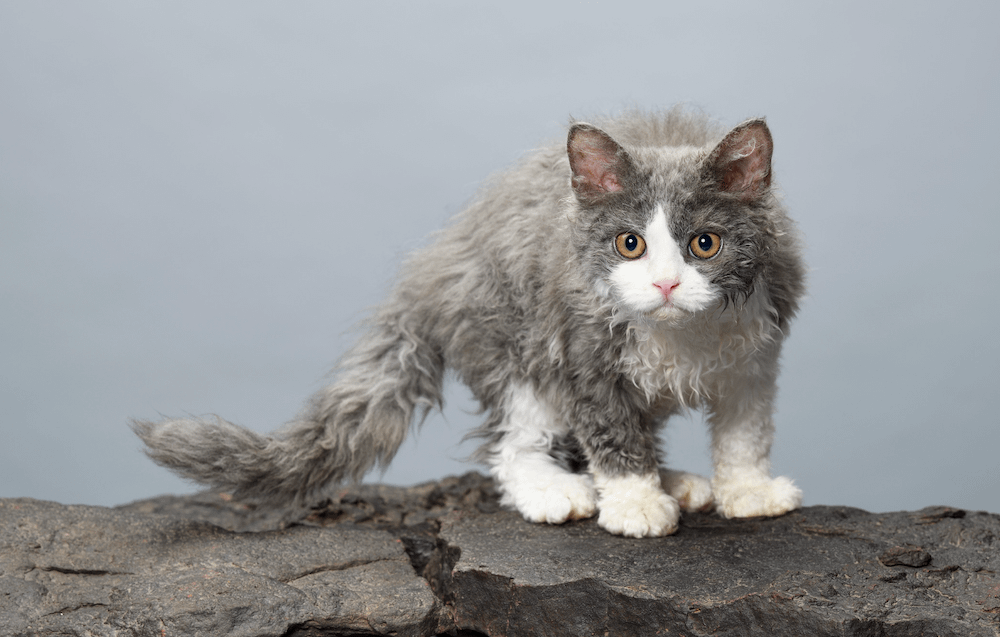
One of the newest natural breeds, the Selkirk Rex originated from a housecat in mountainous Montana. This naturally curly-coated cat can sport either short or long hair: the shorthairs have a dense, plush curl similar to a teddy bear, while the longhairs have a tousled look that is similar to a wooly sheep. These cats are medium to large in size, as well as muscular.
The Selkirk Rex is easygoing and cuddly (the embodiment of the teddy bears they look like!). Not all kittens born to this breed will have curly coats. Interestingly, those that do are born with extremely curly coats that then straighten around 16 weeks of age—only to return with curliness in full force at 8-10 months old.
Scottish Fold
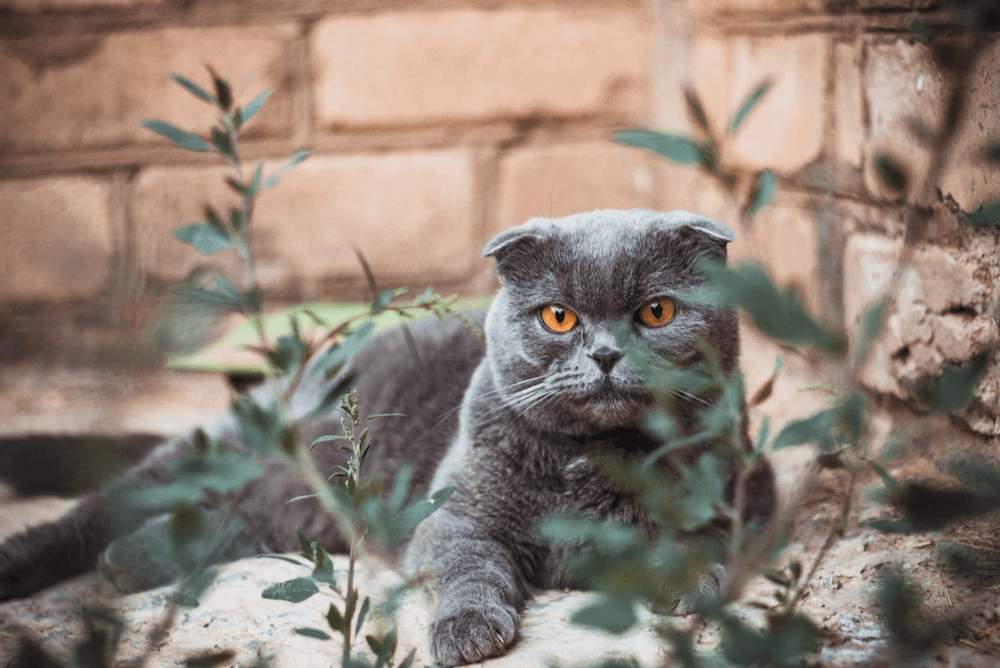
The first recognized Scottish Fold was a barn cat named Susie that lived in cool, wet Scotland in the 1960s. Scottish Folds have plush, dense fur that can be either short or long. Their coats can display a variety of colors and patterns. This breed is best known for the folded ears, which is caused by a natural mutation. Concerns arose about whether their folded ears would increase ear infections or hearing issues. Luckily, these concerns did not play out.
These sweet, chill cats have a sturdy body covered with padding. Fun fact: All Scottish Fold kittens are born with straight ears; 18 to 24 days after birth, their ears will fold in about 50% of the litter.
Manx

The tail-free Manx originated on the Isle of Man, an island between Great Britain and Ireland with a wet, cool climate. This cat features a thick, short coat and a solid body. Inbreeding of the small island population resulted in a lack of tail becoming a common trait among the breed.
These cats are successful mousers known for their hunting skills; yet as a family pet they are affectionate, mellow, and highly people-oriented. Unfortunately, the tail-free mutation in the Manx breed can cause severe developmental abnormalities and even death in kittens and cats. If the Manx interests you as a pet, be sure to adopt from a rescue group rather than perpetuate inhumane breeding practices.
Aphrodite
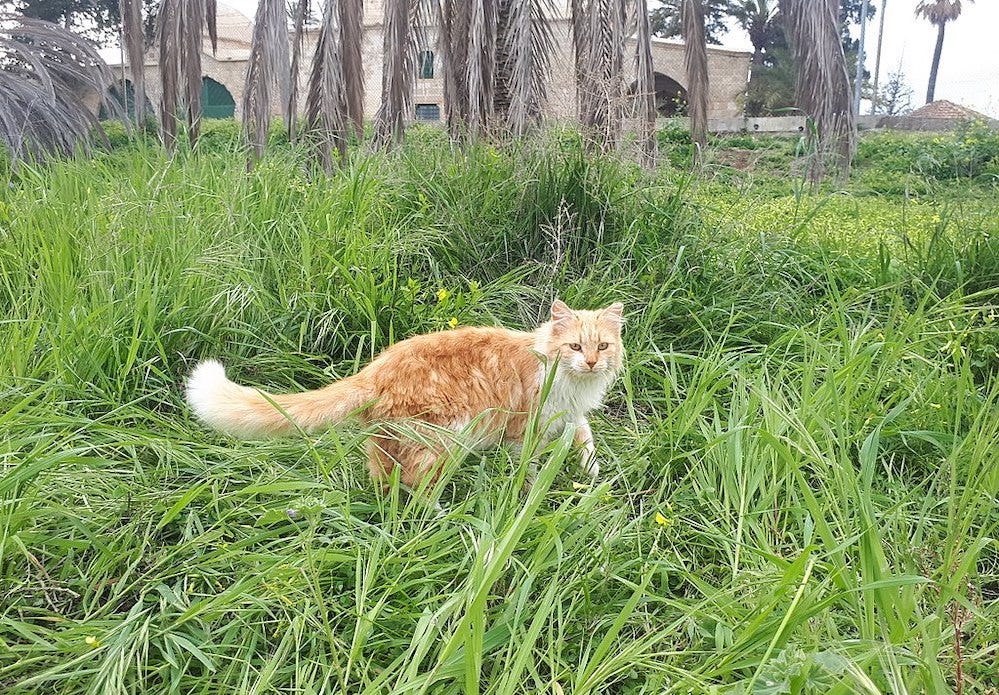
This little-known cat breed can be found exclusively on the island of Cyprus. The Mediterranean may not strike you as an especially cold climate; but because the Aphrodite breed originated in the island’s mountainous regions, these cats grow thick, luxurious coats to survive wintery conditions. They also have uniquely long hind legs, allowing them to climb steep slopes with ease.
Sure, decades or even centuries show that these cat breeds can thrive in cold weather. Fortunately, today many of these kitties no longer need to worry about surviving the hard, freezing winters of their homelands.
What are the health considerations for cats in cold weather?
Even breeds from frosty climates aren't completely immune to the cold. If you have one or more of these breeds as your pet and they usually prefer spending time outdoors during the winter, then there are a few health points to consider.
Their dense fur, for one, may need regular grooming to prevent matting and maintain its insulating power. And because generating body heat in cold weather burns energy, these cats may need more calories during the colder months.
Regular vet visits are crucial to spot any potential cold-related health issues, like frostbite or respiratory problems. And even though these breeds are winter-hardy, they still need a warm, dry shelter to retreat to when the weather turns harsh. It's an essential part of keeping them healthy and comfortable during winter.
Photo credits:
- Cover photo: Dominic Sansotta via Unsplash
- Kurilian Bobtail: © TRUE KURILIANS / Wikimedia Commons / CC-BY-SA-4.0
- Norwegian Forest Cat: © Gangburgondes / Wikimedia Commons / CC-BY-SA-3.0
- Maine Coon: Amber Kipp via Unplash
- Aphrodite: © Apanag10 / Wikimedia Commons / CC-BY-SA-4.0
